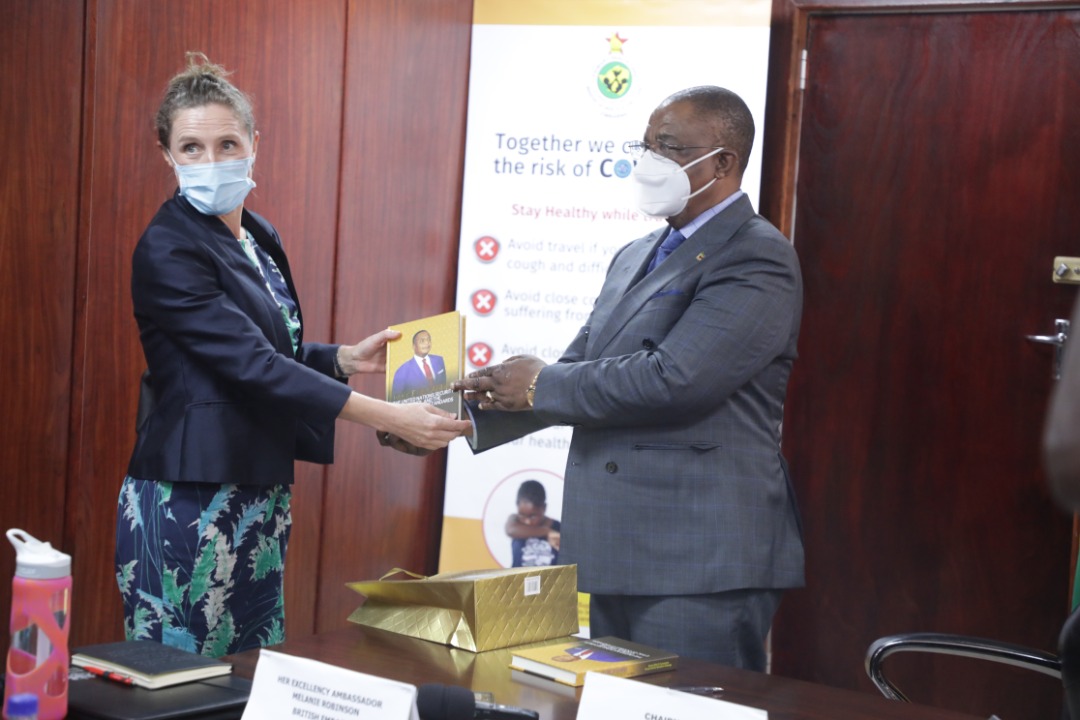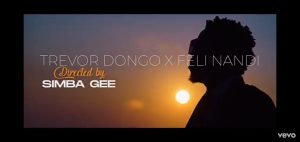
Residents’ indifference on local governance matters a sign of distress: UMRRT
February 25, 2021
Unstable exchange rates, uncertain property rights biggest drawbacks for UK investors in Zim: Ambassador Robinson
March 2, 2021Mutare born video producer Simba Gee revels over first ZIMA award

Talented video producer and musician Simba Gee (right) with Miss Tourism Manicaland Nicole Musiyarira during a video shoot in Mutare recently for his upcoming single Chenai.
Ngoni Dapira
HE has carved his name in the music circles as a top notch video producer, but since 2018 he has also become a versatile sungura artiste whose footprints are not going unnoticed in the country’s music industry. Born and bred in Mutare but now based in Harare, from humble beginnings, Simbarashe Gwati who is popularly known as Simba Gee is a man on a mission. His received his first award at the 2021 Zimbabwe Music Awards (ZIMAs) held last Saturday for directing the Best video of the year 2020, for the song Mufudzi wemombe by Trevor Dongo and Feli Nandi. This attests that the young video producer from Mutare is destined for greater heights in the cut throat Zimbabwe music industry.

A scene from the Mufudzi wemombe video.
Simba Gee’s video production work with the controversial Netherlands based singer and dancer Vimbai Zimuto put him in the spotlight in 2019, because of the explicit and nude nature of Zimuto’s video for the song Hapana Kwaunoenda, but said he held his end solely as a professional photographer and videographer. On the other hand, his coming out as a sungura artiste who is strongly becoming a force not to be reckoned with through his contemporary sungura concept, Simba Gee seems to be destined for greatness.
In 2020 he released singles like Shamwari yangu, Chironzo and Tumbude, which features famed sungura dancer Francis ‘FrancoSlomo’ Dhaka in the video. In those tracks Simba Gee introduced a contemporary sungura style that he said will make waves in the near future, as many critics are already seeing him become a legend in the making, in the mould of the late Prince Tendai Mupfurutsa, who was better known as Prince Tendai.

The late Prince Tendai
Prince Tendai rose to fame in the 1990s as the leader of the group Midnight Magic. He was also a music producer, but it was his music that catapulted him to fame. Many will remember Prince Tendai for opening the doors to many young artistes and music promoters in Zimbabwe. Prince Tendai recorded his first hit ‘Zambezi to Limpopo’ with the Midnight Magic and it went gold in the 1980s. His other hits, under his Barbed Wire sound, included ‘Character’ and ‘Chipo Babe’.
Easterntimeszim Entertainment interviewed Simba Gee on Friday, who was recently home in Mutare for a few days on business for a video shoot. This is what he had to share about his life and career.

Simba Gee
ND: Hi Simba Gee. What is your real name?
SG: My real name is Simbarashe Gwati.
ND: Congratulations on winning the ZIMA best video of the year 2020. Was this your first national award or first nomination?
SG: Thank you Ngoni. This was my first nomination and first award and I am really honoured.
ND: Where did the name Simba Gee come from?
SG: Simba Gee came from my full name Simbarashe Gwati. So it’s the shortcut for my name and surname.
ND: You were born and bred in Mutare. Tell us how was it like when you grew up?
SG: I grew up like any other kid and had a lot of friends mughetto. I grew up in Chikanga Phase 2 and Phase 1, but we later moved to live in Westlea, a medium density suburb. I started developing an interest in music in High School at Mutare Boys High School and later ventured into production of music videos. I used to film at church but honed my skills over the years then decided to do music videos mostly and work with artistes.
ND: When did you leave Mutare for Harare and why?
SG: I left Mutare around 2016. It was mostly because I wanted to spread my wings, but I always come back home. Harare is a big city, so it was wise for me to relocate and further develop myself there.
ND: Tell me more about what you have been doing over the years as a video producer and singer?
SG: I wasn’t doing much besides video production. I was however writing my own songs on the sidelines and now I’m introducing myself as an artiste to the world.
ND: What are your plans and aspirations with your contemporary sungura concept and what is it about?
SG: Contemporary sungura is basically a concept meant to revolutionise the sungura brand and give confidence to fellow musicians that sungura can be classic and international. We should be confident with our culture and music. There is nothing wrong with sungura music. It just needs re-branding. Sungura is one of the best and complicated mix-sounds in the world and our artistes should be proud of that.
ND: How many albums or singles do you have now?
SG: I’m just going to be releasing singles for now and have about nine singles with six of them already out.
ND: What more can we expect from Simba Gee?
SG: I have a lot of projects coming out this year. So just look out for more from me.
ND: How is the music industry in Zimbabwe? Is competition stiff as a video producer?
SG: There is a lot of competition and sabotage, but one just needs to have a vision and aggressiveness.
ND: How is the business of producing videos? Is it busy and are you making enough to break even?
SG: Video production is not easy but I am getting better with experience. You just need to build a name, establish yourself as a brand and gain peoples trust.
ND: You shot some of your videos in Manicaland. As a producer does Manicaland have potential for more videos because a lot of high profile artistes have been coming for music video shoots, the likes of Jah Prayzah?
SG: Manicaland is the most beautiful and scenic province in Zimbabwe and it sad that it takes strangers to come and shoot videos for us to realize this. It has great potential to become a pronounced destination for video shoots.
ND: Did you learn videography in school or from out of interest and passsion?
SG: I taught myself because I had so much interest in it.
ND: Who is your role model locally?
SG: I look up to everyone who is into film and videography in Zimbabwe. I learn from everyone and that is how I built myself.
ND: How did you come up with the script for the award winning video?
SG: Well the first thing when working on a music video is to understand the song, fall in love with it and really feel the meaning of the lyrics. Mufudzi wemombe wasn’t difficult to script because the message behind the song and the instrumental guided me easily to visualize how to tell the story and make it captivating to complement the lyrics.
ND: Your contract as the producer for controversial artiste Vimbai Zimuto got a lot of reviews online because of some of the nude shoots you would take. How do you view your relationship with Zimuto?
SG: Vimbai Zimuto is like a sister and a friend. We started working together in 2017, she is very artistic and the moment we met we connected well. Before her controversial Hapana Kwaunoenda video, we had done other projects and Hapana Kwaunoenda was strategically done to break into the limelight. However after the response we got, Vimbai obviously saw it as a niche market that she could take advantage of and we are still working together.
ND: Lastly, you chose Francis ‘FrancoSlomo’ Dhaka to dance in the video for Tumbude, of which he danced sungura in a different style to push your contemporary sungura concept. What was the reason behind this move?
SG: Oh yes, I believe Franco is the best dancer in Zimbabwe. His talent is natural and unique, so I felt he needs to shine. People haven’t appreciated him enough ever since he left the Macheso camp.
ND: I wish you well in your career. Any advice to other young Mutare artistes that want to follow your path in the music business?
SG: Let’s just be confident and aggressive.


